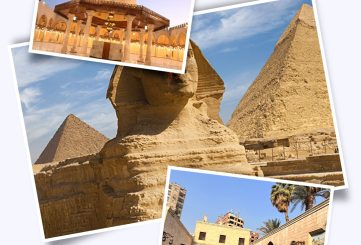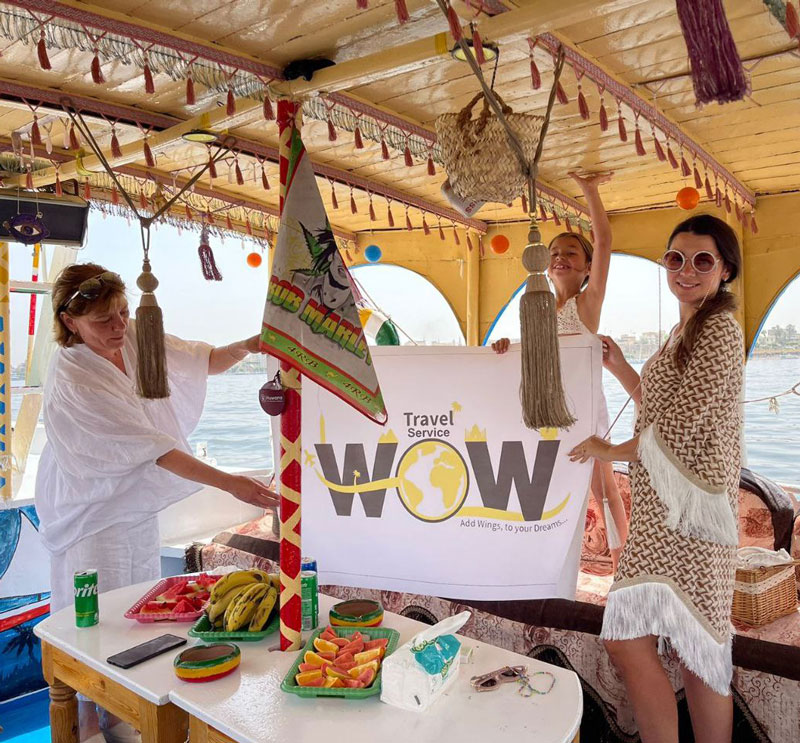Excursion to Luxor individually
- 1-2 persons (sedan car): $100, $50 per person
- More than 2 persons (sedan car/minibus): $30 per additional person to the sum for 2 persons
- Transfer from the hotel at around 4:00 AM, depending on the hotel's location.
- City of the Living: visit to the Karnak Temple Complex (scarab beetle statue, sacred lake).
- Boat trip to the other bank of the Nile.
- City of the Dead: Colossi of Memnon, visit to the Temple of Queen Hatshepsut.
- Optional boat trip to Banana Island (booked through the guide).
- We can recommend a restaurant for lunch.
- Transfer to Hurghada, arrival at the hotel at around 10:00 PM, depending on the hotel's location.
*The order of the excursion may vary depending on the flow of tourists.
- Passport.
- Water, snacks from the hotel, or snacks.
- Headgear.
- Sunglasses.
- Sunscreen.
- Comfortable shoes.
- Warm clothing in winter months.
- Money for personal expenses.
- Prepayment of $50 per person, refundable if the excursion is canceled at least one day in advance.
Included:
- Transportation service.
- Individual transfer in a sedan car or minibus with air conditioning.
- Guide - egyptologist.
Not included:
- Additional expenses not included in the program.
- Entrance tickets to the mentioned attractions.
- Individual boat ride.
- Lunch at a restaurant.
Luxor is rightly considered the largest open-air museum, and its name derives from the Arabic “Al Uqsur,” which means “palaces.” The Nile River divides the city into two parts: the right (eastern) bank known as the “City of the Living” and the left (western) bank known as the “City of the Dead.”
The Karnak Temple Complex covers an area of 1.5 km by 700 m. Construction of the complex began in the 20th century BC and lasted for 13 centuries. Karnak is the only temple consisting of 10 halls and having 10 gates (pylons). Special interest on excursions is usually aroused by the statue of the scarab beetle, which, according to legend, grants wishes, and the sacred lake measuring 129 by 77 meters, which was used in the past for ritual ablutions. From the Karnak Temple Complex to the Luxor Temple, there is a sacred path represented by an avenue of sphinxes.
The Colossi of Memnon are the only surviving reminders of the temple of Amenhotep III, built around 1400 BC. The temple was completely destroyed as a result of an earthquake around 1200 BC, but the colossi remained. Another strong earthquake in the 27th century BC partially destroyed the left statue, and at dawn, the colossus began to sing. However, after the restoration of the colossus in 199 AD, the singing ceased.
The Temple of Queen Hatshepsut was built in 1482-1473 BC. The ancient name of the temple, Djeser-Djeseru, means “the most holy of the holy.” The temple of the female pharaoh was a place of pilgrimage where people left requests for help or healing from diseases on the walls.
When visiting Banana Island, you can see not only how bananas grow but also other fruits such as mangoes and mandarins, as well as sugar cane, mint, and various spices. There is a cafe on the island where freshly picked bananas will be offered to you for free, and you can also pick them directly from the “banana tree” (bush) during the walk on the island.









